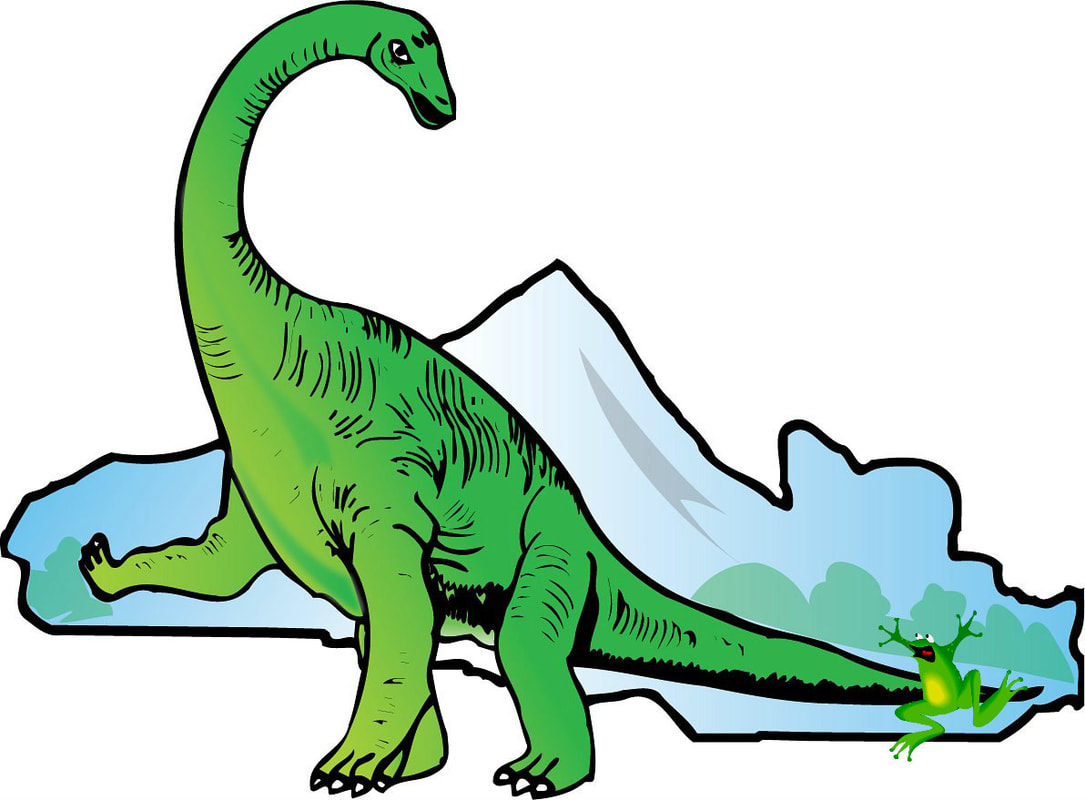Kids and many adults love dinosaurs. This is evident by the huge following of the Jurasic Park movies. And take any kid to a natural science museum and the first thing they want to see are he dinosaurs. Part of everyone's fascination with these prehistoric creatures, mine too, is their size. Plant-eating dino's, like the Diplodocus and the Brauchiosaurus could weigh in the neighborhood of 25-50 tons. That's a pretty big neighborhood! By comparison, the Tyrannosaurus Rex or Spinosaurus which typically weighed around 10 tons each, seemed rather small. Their fossils tells scientists that they were more massive than other other group of animals that ever lived...the exception being certain species of prehistoric whales and sharks. Their extreme weight was supported by the buoyancy of the water. While those of us who are dino-enthusiasts are thrilled by these humongous creatures, their size is often a source of perplexity for paleontologists and evolutionary biologists.
Here are a few of the theories as to why dinosaurs grew to be so large.
Theory 1. They were vegetarians. Back when dinosaurs roamed the earth...the Mesozoic era...carbon levels in the atmosphere were much higher than they are today. If you know much about global warming, you know that the higher the level of carbon dioxide, the higher the air temperatures become. This means that global temperatures were much warmer millions of years ago than they are today. Higher levels of carbon dioxide means not only warmer temperatures, estimated to be between 90 and 100 F (32 C to nearly 38 C) even at both poles, but also a proliferation of vegetation - plants, trees, mosses, etc. The abundance of food meant that sauropods could eat non-stop all day long which could have contributed to their giant size. They were like kids at an all-you-can-eat dessert buffet! "This also explains why certain tyrannosaurs and large theropods were so big; a 50-pound carnivore wouldn't have stood much of a chance against a 50-ton plant eater, " say the scientists.
Theory 2. Their giant size was a form of self-defense. You might find theory 1 a bit simplistic, and it is. Evolutionary biologists know that evolution tends to work along multiple paths, So while having loads of yummy things to eat might be part of the reason, it doesn't explain everything. Paleontologists do believe that dinosaurs gigantism would have made most species virtually immune to predation when they were fully grown. This theory lends a bit of credibility to the idea that the Tyrannosaurus Rex scavenged its food by happening across the carcass of other creatures who died of disease or old age, rather than by them hunting in a dual to the death.
Theory 3. Dinosaurs were so be large because they were a by-product of cold-bloodedness. Many paleontologists believe that giant plant-eating dinosaurs were cold-blooded. Why? There are two good reasons. 1. Based on current models, a warm-blooded Mamenchisaurus (dinos with the extremely long necks) would have "cooked from the inside out...like a baked potato in the microwave...and promptly expired. And 2; No land-dwelling, warm-blooded mammal today even comes close to the size of an herbivorous dinosaur. Scientists believe that if a sauropod evolved to a large enough size, it could achieve "homeothermy," meaning that it could maintain its interior temperature no matter the current environmental conditions. The reason this could have happened is that these giant creatures would have been able to warm up slowly during the heat of the day and then cool back off slowly at night when the the temperatures fell. Smaller reptiles would be at the mercy of current temperatures. Modern thinking, however, suggests that herbivorous dinosaurs were warm-blooded. And while it's possible that some dinosaurs were warm-blooded, while others were cold-blooded, it makes more sense to believe that they were either/or...or somewhere in the middle. After all, every dinosaur evolved from the same common ancestor.
If you're like me, you found these theories fascinating but confusing. And we're not alone. Scientists can't agree on a single theory, either. It's most likely though that a combination of all three theories, along with perhaps a fourth theory which no one has thought of yet, is closer to the truth of why dinosaurs grew to be so BIG! I hope you enjoyed reading this as much as I've enjoyed writing it. Dinosaurs appeal to the kids in all of us. And it's great fun to wonder about what life was like when they roamed the earth over 250 million years ago.

 RSS Feed
RSS Feed